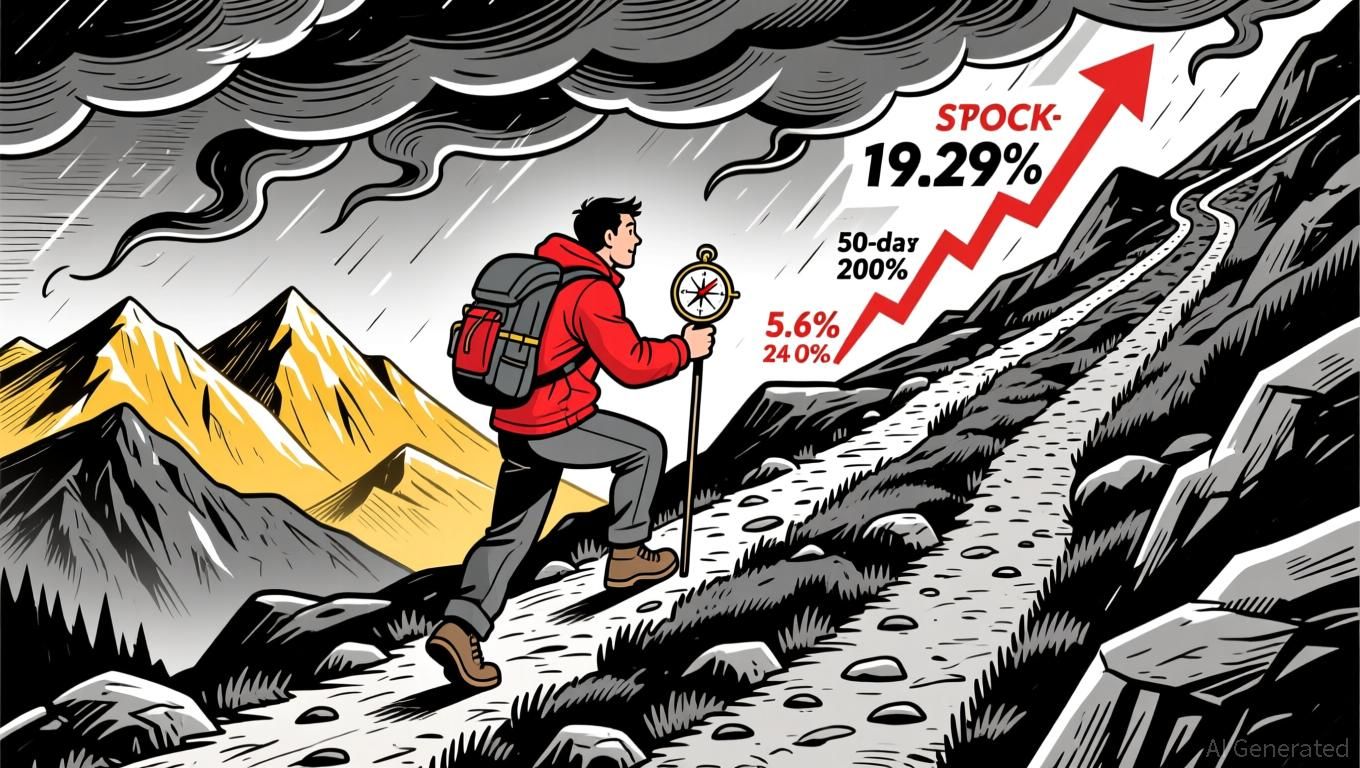Zcash (ZEC) Price Rally as Privacy Coins Recover: Exploring the Drivers and Evaluating Long-Term Investment Potential
- Zcash (ZEC) surged over 7% in 24 hours after Cypherpunk Technologies' $58.88M institutional purchase, pushing prices to a $700+ multi-year high in late September 2025. - The firm's Zcash Digital Asset Treasury aims to accumulate 5% of ZEC supply, positioning it as a privacy-compliant alternative to fully anonymous coins like Monero amid tightening global crypto regulations. - Zcash's optional shielded transaction model using zk-SNARKs offers regulatory flexibility, attracting institutional backing from G
Key Driver: Institutional Entry and Strategic Treasury Moves
The main catalyst behind ZEC’s price spike was Cypherpunk Technologies’ $58.88 million private funding round to establish a Zcash Digital Asset Treasury (DAT), which secured 1.25% of all ZEC in circulation
This acquisition also led to a sharp increase in trading activity, with ZEC’s 24-hour volume surging as Cypherpunk’s stock (CYPH) saw extreme swings, trading over 200 million shares in a single session—far above its usual average
Regulatory Hurdles and Zcash’s Competitive Position
Zcash’s future depends on its ability to adapt to increasingly strict regulations. Privacy coins have come under greater scrutiny in 2025, with agencies like the U.S. Financial Crimes Enforcement Network (FinCEN) and the European Union (EU) introducing limits on default-anonymous transactions under rules such as the Markets in Crypto-Assets Regulation (MiCA)
This difference is crucial. Zcash’s use of zero-knowledge proofs (zk-SNARKs) allows transaction verification without exposing sender, recipient, or amount, aligning with new compliance approaches
Nonetheless, Zcash still faces regulatory risks. Exchanges such as Binance have considered dropping ZEC to comply with EU MiCA requirements, and global enforcement actions—like the prosecution of Tornado Cash developers—underscore the dangers linked to privacy coins
Privacy Coin Divergence: Zcash’s Future Direction
The privacy coin sector is splitting, with some projects moving toward decentralized platforms and others evolving into “privacy-compliant” assets. Zcash’s optional transparency gives it a unique position as a possible link between privacy and regulation. Unlike Monero, which faces existential threats due to its default privacy, Zcash can show that its privacy tools are compatible with audit-friendly systems
Institutional interest further bolsters Zcash’s prospects. The Winklevoss-backed DAT’s ZEC purchase not only demonstrated faith in its long-term value but also showed a calculated strategy to amass a substantial position in a privacy coin while staying within regulatory boundaries
Assessing Long-Term Investment Potential
Although Zcash faces significant regulatory headwinds, its distinctive role in the privacy coin market makes it an attractive investment opportunity. The token’s 150% year-over-year increase in trading volume and institutional support point to its resilience in a market increasingly divided between privacy and regulation
Still, caution is warranted. ZEC’s volatility—highlighted by its 15% drop in the week after the major announcement—shows that uncertainty about its regulatory outlook persists. The growing use of decentralized exchanges (DEXs) and atomic swaps as alternatives to centralized platforms also points to fragmented liquidity for privacy coins
Final Thoughts
Zcash’s recent rally, fueled by institutional involvement and strategic treasury actions, underscores its status as a leading privacy coin in a world of tightening regulations. While obstacles remain—especially from global AML/KYC standards—Zcash’s optional transparency and institutional support make it a stronger long-term bet than fully anonymous alternatives like Monero. For investors, the crucial factor will be how well Zcash manages to balance privacy with regulatory compliance, a challenge that will likely define its path in the years ahead.
Disclaimer: The content of this article solely reflects the author's opinion and does not represent the platform in any capacity. This article is not intended to serve as a reference for making investment decisions.
You may also like
Bitcoin News Update: Canaan's Shift Toward Bitcoin Mining Drives 18% Increase and Sets New Record in Holdings
- Canaan Inc. shares surged 18% pre-market after Q3 revenue jumped 104.4% to $150.5M, surpassing estimates. - Bitcoin mining revenue soared 241% to $30.6M, driven by 267 BTC mined and 10 EH/s computing power sold. - Company boosted crypto holdings to 1,610 BTC/3,950 ETH by October 2025 and secured a 50,000-unit mining machine order. - Q4 revenue guidance ($175-205M) exceeds $148. 3M estimates, but risks include U.S. tariffs and regulatory shifts. - Analysts maintain "buy" ratings with a $3.00 price target

BCH Climbs 5.6% Over 24 Hours as Institutions Adjust Their Portfolios
- BCH surged 5.6% in 24 hours to $514.6 amid mixed 1-month (-3.14%) and 1-year (19.29%) performance. - Institutional investors reshaped holdings: Itau Unibanco cut 21.3% stake, while Goldman Sachs and Robeco increased positions. - Analysts raised price targets to $33-$35 with "neutral" ratings, though Zacks upgraded to "strong-buy" amid improved long-term outlook. - BCH maintains 1.24% institutional ownership, 12.92 P/E ratio, and stable financial metrics (quick ratio 1.53, debt-to-equity 2.00).

Solana's Latest Fluctuations: Understanding Blockchain Challenges and Institutional Perspectives for 2025
- Solana's Q3-Q4 2025 price volatility ($140-$160) highlights tension between strong on-chain metrics and liquidity/security risks. - ETF inflows ($417M) and DApp growth ($3.79M daily revenue) contrast with declining TVL (-11%) and stablecoin market cap (-8.16%). - Validator concentration risks persist despite innovations like Firedancer, as institutional confidence hinges on resolving security vulnerabilities and decentralization gaps. - Long-term SOL price targets ($500) depend on sustaining performance
Solana (SOL) Price Rally Expected in Late 2025: Driven by On-Chain Growth and Favorable Macroeconomic Factors
- Solana's 2025 price surge stems from technical upgrades (Firedancer, Alpenglow) and institutional adoption, outpacing Bitcoin/Ethereum ETF inflows. - Western Union's USDPT stablecoin launch on Solana in 2026 highlights growing real-world utility for cross-border payments and DeFi integration. - 70% staking ratio and 7% annualized staking yields attract $541M in institutional capital, reinforcing network security and long-term incentives. - Macroeconomic tailwinds from Fed policy and RBNZ rate cuts create